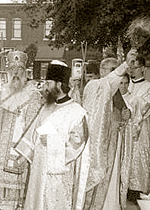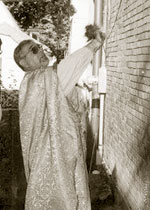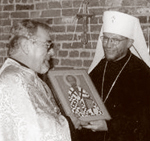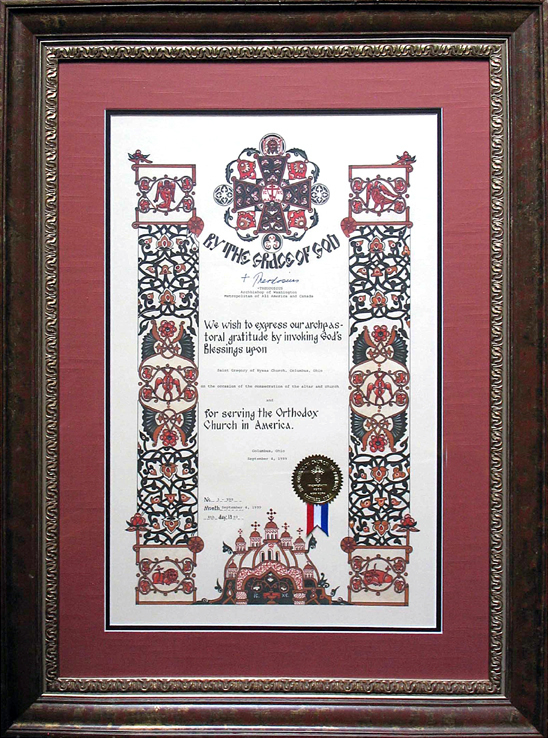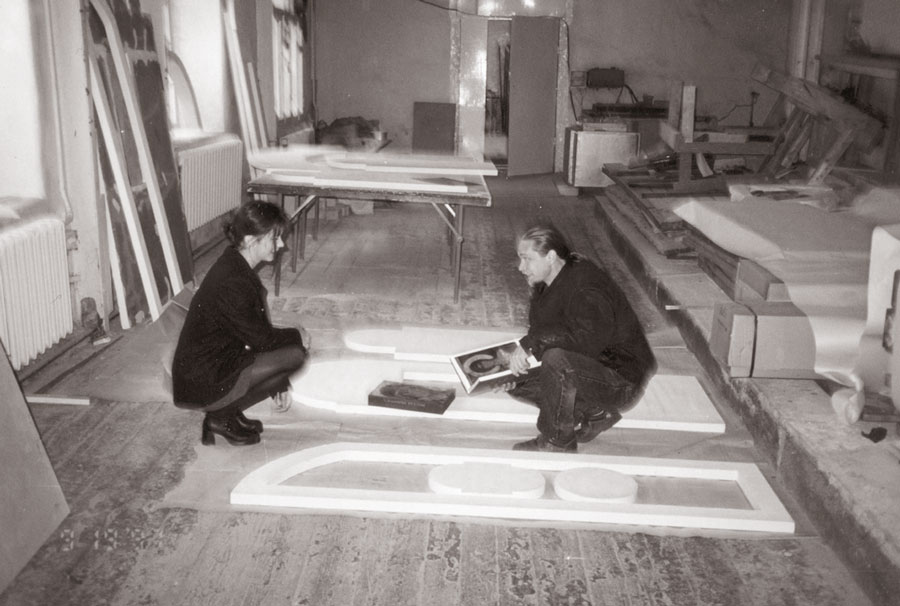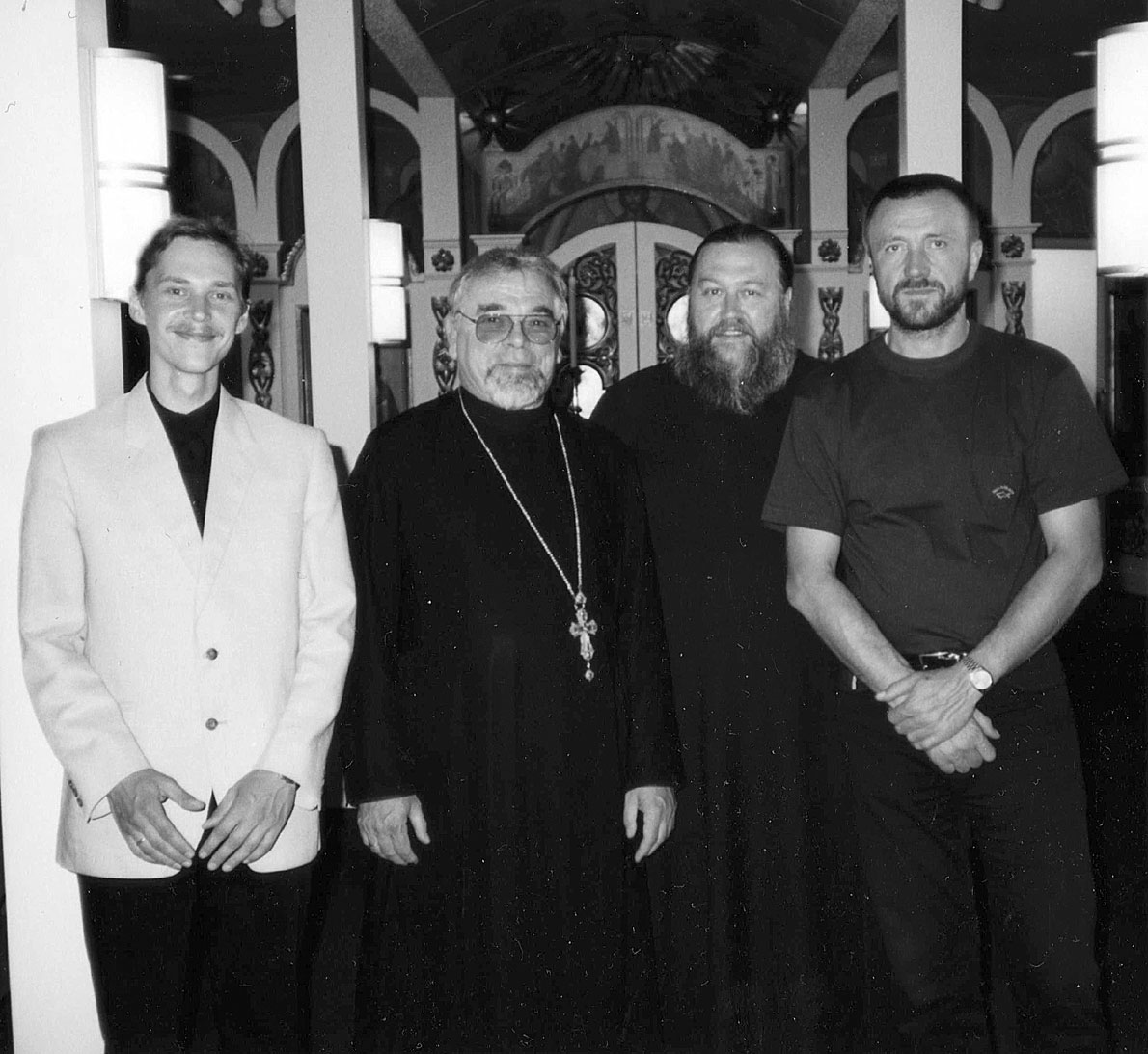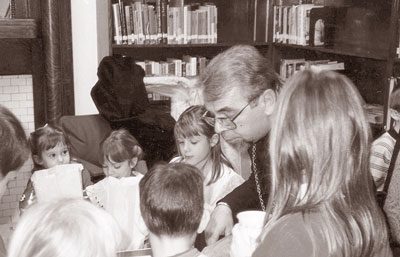Among those saints whose relics are contained within the consecrated altar are: The New Martyr, Barbara, attendant to the Grand Duchess Elizabeth; The New Martyr St. Alexis of Wilkes Barre; St. Herman of Alaska; Martyrs Probus, Tarachus and Andronicus (3rd Century). The relics in the antimins are also those of the New Martyr Barbara. Other relics in the church are those of Saint Herman and Saint Gregory of Nyssa (in their respective icons).
Our Relics
Nikolai Mukhin
Iconographer Nikolai Mukhin has painted murals in the altar and arches of the Church of the Presentation of the Virgin in the Tolga Monastery in Yaroslavl, painted murals in the Russian Church in Japan, painted the dome in the chapel of the president’s palace Saint Antoine in Malta, and painted icons at Christ the Savior Cathedral in Moscow.
Former Location
From the founding of the parish until December, 1994, we met in a chapel owned by the Melkite Christian congregation on 15th Avenue. At the time we left there, the chapel was also used by the Ethiopian and Coptic Orthodox congregations in town.
Once a Showroom
The church building was formerly a two-story Cadillac showroom.
Ralph Lauren paints
The paints Nikolai Mukhin used in the church frescos are hand-mixed Ralph Lauren paints purchased locally. The colors are surprisingly softer than typical tones used in iconography. Mr. Mukhin explained that he purposely chose to use “new” warmer, lighter colors in the iconography to express the openness of the church and America as a new country for the Orthodox faith.
An Informal Account of the Formation of St. Gregory of Nyssa Orthodox Church
By Mat. Elaine Rentel
The church was sparse and there were few icons and no iconostasis; we had no altar covering whatsoever, and virtually all of our liturgical vessels were donations from other churches.
By the grace of God, the Columbus, Ohio, Orthodox Christian community of St. Gregory of Nyssa has always known its special calling: service to the spiritual needs of students of The Ohio State University.
From that dedication has grown recognition that charity for neighbors, community and society at large are as vital to living Our Savior’s teaching as air is to breathe.
The small group attending the first service on Jan. 9, 1983, shared a vision with an eager pastor, Father Daniel W. Rentel.
The 13 gathered that wintry night, the eve of the Feast of St. Gregory of Nyssa, committed their newborn mission to the path laid out by Father Daniel. They also adopted the patronage of St. Gregory and united with the Orthodox Church in America.
Supported for 20 years by a hard-working year-round group of worshipers, St. Gregory’s has provided a church where students can worship in English away from home and meet others of the same faith. It has become a place where students inquiring into the Eastern Orthodox faith can find answers to their questions. For some seekers, this association has led to entrance into the faith by baptism and chrismation, or by chrismation alone. But St. Gregory’s is not an Orthodox house of prayer and worship only for OSU students. Students from other colleges and universities in or near Columbus are welcome.
Taking root
The new parish endured the pangs and headaches most missions face: raising funds, searching for a center to worship, outreach and growth.
For 10 years, the community prayed in a rented chapel near the OSU campus. The core congregation set about organizing and fund raising, while irrepressible students pitched in, teased and energized their elders.
In the first year, the congregation celebrated its first Divine Liturgy, formed a choir and held the inevitable bake sale. The small group put together 10 trays of baklava and about 98 dozen Russian tea cakes to raise an amazing $337. The baking project continues today at Christmas time. It is greatly expanded, with nearly every member of the congregation involved with this key fundraiser.
By the end of the 1984, more firsts occurred: an infant and an adult baptism and a wedding.
Growth and a favorable job market in the city of Columbus figured greatly in the expansion of St. Gregory’s. Professionals, researchers, scholars and undergraduates from diverse regions of the United States and abroad came to the city. The Orthodox who favored prayer in the English language came to St. Gregory’s.
Although no ethnic culture was preferred, the customs of many Orthodox lands worked their way into parish life. The choir regularly sings music arranged from Byzantine, Romanian, Bulgarian, Greek, Serbian, Ukrainian and Russian melodies.
By 1985, St. Gregory’s scheduled its first annual meeting. By 1985, a church school was in place. By 1998, St. Gregory’s was incorporated. From 1986 to 1992, many young families with children entered the community.
“With this new growth, the congregation became cramped by the limitations of its rented space. St. Gregory’s marked the end of its first decade by moving into its own campus-area building, a former Cadillac showroom, located in the inner city.”
The church was sparse and there were few icons and no iconostasis; we had no altar covering whatsoever, and virtually all of our liturgical vessels were donations from other churches. Father Dan had all of two sets of vestments. But we were rich!” wrote Elaine Rentel for the 1999 consecration of the church building.“We wept at the great gifts God had bestowed on us. We joyfully received the food of the Kingdom, and we sang glorious hymns of praise,” she added.
An Important Meeting
While traveling in Russia sometime later, Father Rentel met Nikolai Mukhin, a renowned artist in Jaroslavl, who was eager to paint for Orthodox churches in the United States. Mukhin visited Columbus in 1996 to survey the church and to design an iconostasis and other artwork.
With great faith, members pledged their dollars toward the beautification of their church. Two years after Mukhin’s visit, nine crates of icons and wooden embellishments arrived safely. Nikolai Mukhin and his artists began painting and installing in the steamy hot days of September 1998. Visitors, believers and nonbelievers, academicians, linguists, artists, newspaper reporters, photographers, historians all came to watch the transformation. The faithful came to pray and give thanks once again.


